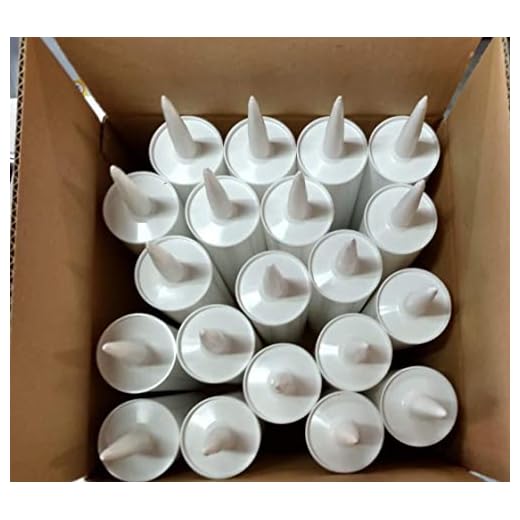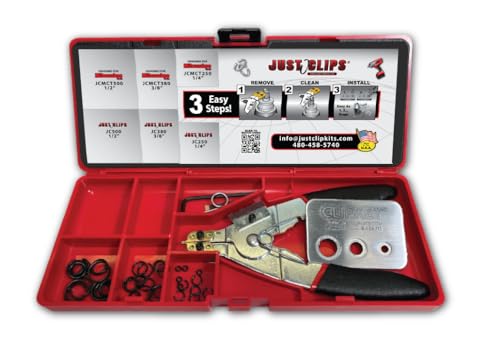








If you have ever tried to seal gaps or cracks in your home, you probably know how frustrating it can be. However, with the right tool, such as a caulking gun, the job becomes much easier and more efficient. A caulking gun is a handheld tool that is specifically designed to dispense caulk or sealant.
Using a caulking gun is simple, but it is important to know the proper technique to get the best results. First, you need to prepare the area by cleaning it and removing any old caulk or loose debris. Then, cut the tip of the caulk tube at a slight angle to create a small opening. Insert the tube into the caulking gun, making sure it is securely in place.
Next, hold the caulking gun at a 45-degree angle to the surface you want to caulk. Squeeze the trigger to start the flow of caulk, and slowly move the gun along the gap or crack, applying a smooth and even bead of caulk. It is important to maintain a steady pressure on the trigger to ensure a consistent flow of caulk. Once you have applied the caulk, use a caulk smoothing tool or your finger to smooth and shape the caulk.
After you have finished using the caulk, release the pressure on the trigger and press the release lever on the caulking gun to stop the flow of caulk. Wipe off any excess caulk from the tip of the gun and replace the cap on the caulk tube to keep it fresh for future use. With a little practice, using a caulking gun can become second nature, allowing you to easily seal gaps and cracks in your home.
Preparation Steps for Using a Caulking Gun
Before you can start using a caulking gun, there are a few important preparation steps that you need to follow:
- Clean the surface: Make sure the surface that you will be caulking is clean and free of any debris, dust, or loose particles. Use a brush or a damp cloth to remove any dirt or grime.
- Prepare the caulk: Cut the tip of the caulk tube at a 45-degree angle using a utility knife. The size of the opening will depend on the width of the gap you need to fill. Smaller gaps require a smaller opening, while larger gaps require a larger opening.
- Load the caulk tube into the gun: Insert the caulk tube into the gun by pulling back the rod and placing the tube into the barrel of the gun. Push the rod forward until the tube is secure.
- Prime the caulk gun: Before you can start using the caulk gun, you need to prime it by squeezing the trigger until the caulk starts to flow smoothly. This will ensure that the caulk will come out evenly when you start applying it.
- Position the caulk gun: Hold the caulk gun at a 45-degree angle to the surface you will be caulking. This will allow you to easily apply the caulk and ensure a consistent bead.
By following these preparation steps, you will be ready to effectively use a caulking gun for any sealing or repair project. Remember to always wear protective gloves and follow the manufacturer’s instructions for the specific caulk you are using.
Loading Caulk into the Caulking Gun
One of the first steps in using a caulking gun is loading it with caulk. Follow these steps to properly load caulk into your caulking gun:
- Start by removing the rod or plunger from the back end of the caulking gun. This may involve pressing a release lever or unscrewing a cap.
- Place the tube of caulk into the open end of the caulking gun. Make sure the nozzle is facing towards the front of the gun.
- Push the rod or plunger back into the caulking gun, making sure it fits securely into the base of the caulk tube.
- If there is a metal seal on the caulk tube, use a sharp object like a nail or a small knife to puncture it. This will allow the caulk to flow out of the tube.
- Once the caulk tube is securely in place and the seal is punctured, squeeze the trigger of the caulking gun to create pressure and start the flow of caulk.
- Check the flow of caulk by squeezing the trigger gently. If the caulk does not flow smoothly, you may need to adjust the tension on the caulking gun by turning the adjustment screw.
- Continue to squeeze the trigger and apply the caulk to the desired area. Move the caulk gun smoothly and steadily along the surface, maintaining a consistent bead of caulk.
Remember to cut the tip of the caulk nozzle at a 45-degree angle for more precise application. It’s also important to clean the caulk gun after use to prevent dried caulk from clogging the mechanism.
Now that you know how to load caulk into a caulking gun, you’re ready to tackle your next caulking project with confidence!
Applying Caulk with a Caulking Gun
Using a caulking gun is a simple and effective way to apply caulk to various surfaces, such as around windows, doors, and bathtubs. Here are the steps for using a caulking gun:
Step 1: Prepare the surface
Clean the surface where you plan to apply the caulk. Remove any old caulk or loose material to ensure a clean and smooth surface.
Step 2: Load the caulking gun
Insert the caulk tube into the gun by pulling back the rod. Make sure the nozzle is facing outward and the plunger is at the back of the gun.
Step 3: Cut the tip of the caulk tube
Using a utility knife, cut the tip of the caulk tube at a 45-degree angle. The size of the opening will depend on the width of the joint or crack that you’re filling. Cut a smaller opening for narrower gaps and a larger opening for wider gaps.
Step 4: Apply the caulk
Hold the caulking gun at a 45-degree angle to the surface. Squeeze the trigger while slowly moving the gun along the joint or crack that you’re filling. Apply consistent pressure to ensure an even flow of caulk. For longer joints, you may need to stop and start again to maintain control.
Step 5: Smooth the caulk
After applying the caulk, use a caulk smoother or your finger to smooth the caulk into the joint. This will help create a neat and professional finish. If necessary, you can also dip your finger into a small dish of soapy water to prevent the caulk from sticking to your finger.
Step 6: Clean up
Once you have finished applying and smoothing the caulk, remove any excess caulk with a damp cloth or sponge. Make sure to clean the caulk gun and nozzle with warm, soapy water so it’s ready for future use.
Remember to read and follow the manufacturer’s instructions for the specific caulk product you are using. Practice using the caulking gun on a scrap piece of material before attempting to apply caulk on your desired surface.
Proper Techniques for Using a Caulking Gun
Using a caulking gun may seem straightforward, but there are a few key techniques that can help you achieve better results. Whether you’re sealing joints or applying caulk around windows or doors, following these steps will ensure a clean and professional finish.
Choosing the Right Caulk
Before using a caulking gun, it’s essential to select the right caulk for your project. There are various types available, such as silicone, acrylic, and latex caulk. Consider the specific needs of your project, such as the materials you’re working with and the level of flexibility you require.
Consult the manufacturer’s instructions to determine which caulk is suitable for your particular application. Additionally, consider the durability, drying time, and moisture resistance of the caulk to ensure it meets your needs.
Preparing the Caulking Gun
Prior to use, prepare your caulking gun by cutting the tip of the caulk tube at a 45-degree angle. The size of the hole depends on the width of the joint you’re sealing. A good rule of thumb is to cut the hole slightly smaller than the intended joint size, as it can always be enlarged later.
Insert the caulk tube into the gun and lock it into place. Many caulking guns have a release lever or trigger that allows you to load the tube easily. Once the tube is secure, squeeze the trigger a few times to prime the gun.
Applying the Caulk
Hold the caulking gun at a 45-degree angle to the joint you’re sealing. Position the tip of the caulk tube against the joint and apply steady pressure on the trigger to dispense the caulk. It’s important to maintain a consistent pace to ensure an even bead of caulk.
Slowly move the caulking gun along the joint, applying the caulk in a continuous motion. Be cautious not to apply too much caulk at once, as excess caulk can be messy and difficult to clean up.
If the joint you’re sealing is wider than the caulk bead, consider using a backer rod to fill the gap partially. This helps the caulk adhere better and improves the overall appearance of the joint.
Finishing the Job
Once you’ve applied the caulk, use your finger or a caulk smoothing tool to smooth the bead. Wetting your finger or the tool with a small amount of soapy water can make this process easier. Smooth the caulk gently, taking care not to remove too much caulk from the joint.
After you’ve smoothed the caulk, allow it to dry according to the manufacturer’s instructions. Avoid touching or disturbing the caulk until it has fully cured.
Remember, practice makes perfect when it comes to using a caulking gun. With time, you’ll become more proficient in applying caulk and achieve professional-looking results.
Cleaning and Storing Your Caulking Gun
Properly cleaning and storing your caulking gun is important for maintaining its functionality and extending its lifespan. Follow these steps to ensure your caulking gun stays in optimal condition:
1. Disassemble the gun:
Start by removing the caulk tube from the gun. Then, pull back the rod and release the pressure plate to relieve any remaining pressure. Next, unscrew the plunger rod and remove it from the gun. Finally, detach the nozzle or cutter if applicable.
2. Clean the gun:
Use a rag or paper towel to wipe away any excess caulk from the gun body, rod, and nozzle. For stubborn residue, you can use a caulk remover or a mixture of warm water and mild detergent. Be sure to thoroughly clean all the parts, including the handle and trigger mechanism.
3. Lubricate the moving parts:
Apply a small amount of lubricant, such as silicone spray or gun oil, to the moving parts of the gun. This will help prevent rusting and ensure smooth operation.
4. Reassemble the gun:
Once all the parts are clean and dry, reassemble the caulking gun in the reverse order of disassembly. Screw the plunger rod back into place, attach the nozzle or cutter if necessary, and insert a new caulk tube into the gun.
5. Store the gun properly:
Store your caulking gun in a cool and dry place to avoid moisture accumulation and rust. Make sure it is stored in an upright position to prevent any leakage of caulk. Consider using a caulk gun holder or a dedicated toolbox to protect it from damage.
6. Regular maintenance:
Perform regular maintenance on your caulking gun to keep it in top condition. This includes cleaning it after each use, inspecting for any damage or wear, and replacing any worn-out parts as needed.
By following these cleaning and storage tips, you can ensure that your caulking gun is always ready to tackle your next caulking project effectively.








